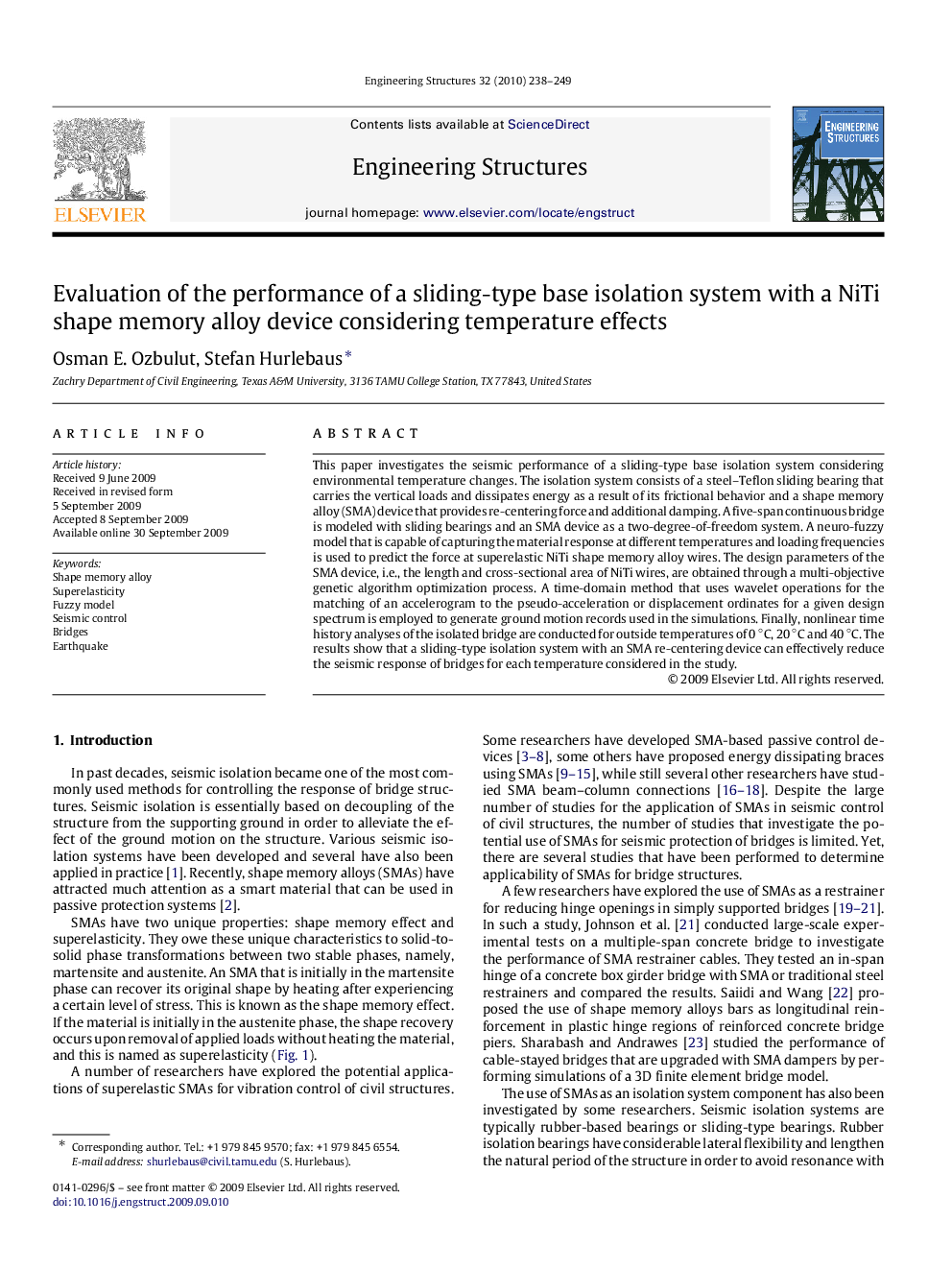| Article ID | Journal | Published Year | Pages | File Type |
|---|---|---|---|---|
| 268697 | Engineering Structures | 2010 | 12 Pages |
This paper investigates the seismic performance of a sliding-type base isolation system considering environmental temperature changes. The isolation system consists of a steel–Teflon sliding bearing that carries the vertical loads and dissipates energy as a result of its frictional behavior and a shape memory alloy (SMA) device that provides re-centering force and additional damping. A five-span continuous bridge is modeled with sliding bearings and an SMA device as a two-degree-of-freedom system. A neuro-fuzzy model that is capable of capturing the material response at different temperatures and loading frequencies is used to predict the force at superelastic NiTi shape memory alloy wires. The design parameters of the SMA device, i.e., the length and cross-sectional area of NiTi wires, are obtained through a multi-objective genetic algorithm optimization process. A time-domain method that uses wavelet operations for the matching of an accelerogram to the pseudo-acceleration or displacement ordinates for a given design spectrum is employed to generate ground motion records used in the simulations. Finally, nonlinear time history analyses of the isolated bridge are conducted for outside temperatures of 0 ∘C, 20 ∘C and 40 ∘C. The results show that a sliding-type isolation system with an SMA re-centering device can effectively reduce the seismic response of bridges for each temperature considered in the study.
